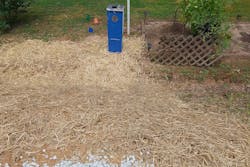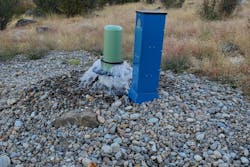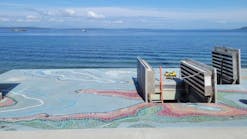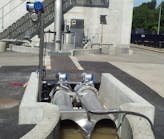The City of Durham provides safe drinking water to a population of more than 289,000 people. The City’s Department of Water Management (DWM) delivers water to approximately 99,000 service connections through 1,400 miles of watermains. Lake Michie and Little River Reservoir are the two sources that deliver raw water to the City’s two treatment plants, using a combination of gravity flow and electric and hydro-powered pumping systems.
Elevated tanks at the plants store treated water and help to maintain pressure in the distribution system. Any time pumps are part of a pressure zone or a district metered area (DMA), there is an increased risk for water surges or pressure spikes. The City has several DMA’s to control this flow, but not every zone was being monitored for pressure fluctuations. After having an average of 12 main breaks a month over the last several years, DWM’s Superintendent for Water & Sewer Maintenance, Junior Mobley, thought that the City should explore ways to monitor pressure throughout its system.
Around the same time, the City was planning to upgrade its sampling stations to provide a higher level of water quality assurance and improve station locations. Over time, this would eliminate the need for staff to enter businesses to collect state-required water samples. It would also provide the opportunity to relocate and upgrade existing stations, so that staff would no longer have to cross property lines, which often proved to be complicated.
Mobley visited a Mueller Water Products’ factory in Cleveland, Tennessee where he met with Hydro-Guard® engineers and explained the City’s need for pressure monitoring. “I was familiar with the Hydro-Guard flushing system from a previous job, but new to me were the additional features and technology capabilities of the Hydro-Guard to also monitor pressure and water quality within these units,” said Mobley. “Having a 3-in-1 solution would save time on installation, maintenance and monitoring.”
The City identified the need for 21 Hydro-Guard stations that perform a combination of flushing, sampling and pressure monitoring. Also, for short term solutions in areas where a 3- in-1 station has not been installed yet, staff have modified the remote pressure monitoring bracket so it can be installed on fire hydrants. Currently, staff have installed 11 pressure monitors on fire hydrants throughout the system. Installation was easily performed by the City’s water maintenance staff. “Similar to our existing setup, we just added a 2" wet tap with a 2" gate valve and then we run 2" copper over to the station,” said Mobley.
The remote pressure monitoring units have a cellular connection allowing authorized personnel to see the pressure in the system at any time from anywhere using a connected device. Users can choose a setting which records standard state pressure readings every 15 seconds or they can choose to measure transient pressure at a rate of 256 reading per second. “If there is a spike in the system, I get an alert and can send a crew out to investigate. This allows us to respond quicker, and usually before we receive customer complaints about a hydrant being hit or a water main break,” said Mobley.




